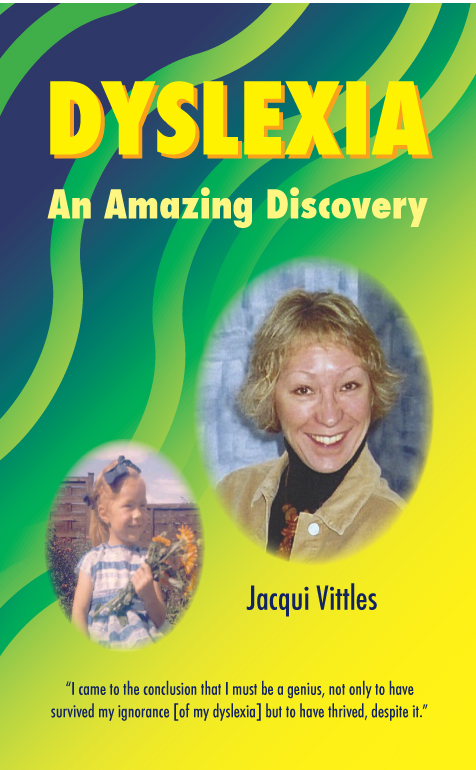 This is your typical triumph-over-adversity memoir seasoned with a sprinkling of self-help. It’s a quick and easy read for anyone interested in finding out more about dyslexia and how one person experienced it. The author points out that while there are 37 key characteristics of the disorder, they can occur in different combinations and strengths in each person, making it difficult to pick up in some cases (the author was 46 when she found out by accident). Vittles describes her childhood and teenage experiences in great detail (sometimes a little too much detail and a little too much sentimentality) and builds up a picture of a person trained to believe from her first days of schooling that she was lazy and stupid. Her eroded self-belief resulted in her developing several behavioural problems that would have sunk anyone in less conducive circumstances.
This is your typical triumph-over-adversity memoir seasoned with a sprinkling of self-help. It’s a quick and easy read for anyone interested in finding out more about dyslexia and how one person experienced it. The author points out that while there are 37 key characteristics of the disorder, they can occur in different combinations and strengths in each person, making it difficult to pick up in some cases (the author was 46 when she found out by accident). Vittles describes her childhood and teenage experiences in great detail (sometimes a little too much detail and a little too much sentimentality) and builds up a picture of a person trained to believe from her first days of schooling that she was lazy and stupid. Her eroded self-belief resulted in her developing several behavioural problems that would have sunk anyone in less conducive circumstances.
The story is particularly interesting when Vittles describes the coping mechanisms she developed to help her read, deal with numbers, and manage her life in general. Her descriptions of seeing numbers and days of the week in images and colours are highly reminiscent of the autism memoir On a Blue Day by Daniel Tammet.
On a different note, the first thing that struck me about this book was the font. While it is uncommon to have a book like this in a sans serif font, it immediately recalled to mind The Curious Incident of the Dog in the Night by Mark Haddon, which chose sans serif deliberately, in order make it a little less smooth to read (the serifs connect the letters and help the eye to flow over them) and to provide some subliminal empathy with the autistic protagonist. Given this is a book about someone who is ‘word blind’ I wondered if this was a conscious choice.
All up, this is a chatty, informative read that provides much food for thought.

Comments
Total Comments : ( ) You have to register to post a comment.
RECENT COMMENTS